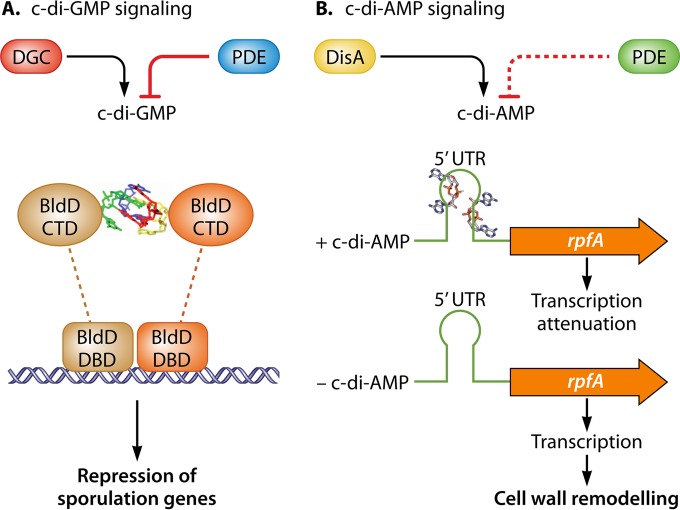FIG 4.
Graphical summary of the c-di-GMP and c-di-AMP signaling pathways. (A) GGDEF-type diguanylate cyclases (DGCs) and EAL- and HD-GYP-type phosphodiesterases (PDEs) make and break c-di-GMP. A tetrameric c-di-GMP binds to the developmental master regulator BldD and links the two otherwise separate C-terminal domains (CTDs), resulting in protein dimerization. This enables the transcriptional repressor BldD to effectively bind to target DNA via its N-terminal DNA binding domain (DBD), leading to repression of sporulation genes during vegetative growth (4, 12). (B) DisA is the sole DAC protein responsible for synthesis of c-di-AMP. A c-di-AMP degrading PDE has yet to be identified (indicated by a dashed line). Binding of 2 c-di-AMPs to the ydaO-like riboswitch (41) in the 5′ untranslated region (5′ UTR) upstream of rpfA (resuscitation-promoting factor A) results in transcriptional attenuation. The absence of c-di-AMP favors rpfA transcription and accumulation of the RpfA cell wall-remodelling enzyme during spore germination (71).

